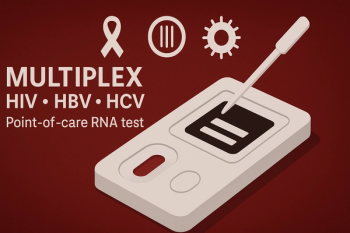
Top Infectious Disease News of the Week—October 14, 2018
Stay up-to-date on the latest infectious disease news by checking out our top 5 articles of the week.
#5: Common Probiotic Appears to Eliminate S aureus Colonies
New research from the National Institutes of Health (NIH) suggests a widely available probiotic could be a secret weapon in the fight against Staphylococcus aureus.
In a newly published study, scientists show that the presence of the probiotic Bacillus, appeared to eliminate S aureus from the gut and nose.
Investigators from NIH’s National Institute of Allergy and Infectious Diseases working alongside scientists from 2 Thai universities, Mahidol University and Rajamangala University of Technology, made the discovery.
Read more about the
#4: Improving Antimicrobial Stewardship in the Management of Respiratory Infections
Antimicrobial resistance is a growing threat to public health. According to the US Centers for Disease Control and Prevention, at least 2 million Americans contract an antibiotic-resistant bacterial infection each year, and about 23,000 of these patients die.
The antibiotic resistance crisis has arisen because of anti­biotic overuse and misuse, and antimicrobial stewardship represents a vital initiative to help combat it. Antimicrobial stewardship is composed of coordinated strategies designed to improve the appropriateness of antimicrobial use, aiming not only to reduce resistance to antimicrobial agents but also to enhance patient care.
Interventions are especially needed to improve antibiotic use for common indications such as lower respiratory tract infections. These infections are a major public health problem in many countries, causing significant morbidity and mortality. And, according to Mary A. Musgrove, PharmD, of Henry Ford Hospital, Detroit, Michigan, and colleagues, about one-third of antibiotics administered in US hospitals are used to treat lower respiratory tract infections.
Read more about
#3: Plazomicin: A Novel Aminoglycoside
Aminoglycosides date back to the 1940s, with the intro­duction of streptomycin. Streptomycin was the first antibiotic available for the effective treatment of tuber­culosis, netting its discoverer, Selman Waksman, a Nobel Prize. During the golden age of antibiotic development in the 1940s through 1960s, aminoglycosides continued to advance, along with many novel classes of antibiotics. Because of their potent activity against gram-negative organisms, aminoglycosides became mainstays of infectious diseases pharmaco-therapy, before eventually being displaced by broad-spectrum β-lactams, which became widely available in the 1980s and 1990s.
Inevitably, organisms developed resistance mechanisms to aminoglycosides. In Enterobacteriaceae, resistance is commonly due to plasmid-encoded aminoglycoside-modifying enzymes (AMEs). These enzymes cause a change in the chemical structure of the aminoglycoside compound, resulting in lower binding affinity for the bacterial ribosome and high-level resistance to the class.
Read more about
#2: 29 States Affected by Multidrug-Resistant Salmonella Outbreak Linked with Chicken
The US Centers for Disease Control and Prevention (CDC) are working alongside health officials in 29 states to investigate an outbreak of multidrug-resistant Salmonella Infantis infections. This outbreak has been linked to raw chicken products, adding yet another poultry-related outbreak to the list.
As of October 15, 2018, 92 illnesses have been reported across 29 states, with the onset of infection occurring between January 19, 2018, through September 9, 2018.
The ages of those who have fallen ill range from less than 1 year to 105 years with a median age of 36; at this time, 69% of the ill are female. Of the 62 individuals for which there was available information, there have been 21 hospitalizations with no deaths reported thus far.
Read more about the
For the most recent case counts, be sure to check out the
#1: Guideline Updates for the Treatment of Adolescents and Adults with HIV
The availability of more treatment options for HIV has made management of infections easier than ever before. With over 45 individual and fixed-dose combination antiretroviral agents approved by the US Food and Drug Administration, providers are able to select the antiretroviral regimens best suited for the patient, and selection of antiretroviral therapy should be based on updated guideline recommendations.
Several guidelines on the treatment and management of HIV infection are avail­able, including but not limited to those by the US Department of Health and Human Services (DHHS), the International Antiviral Society—USA Panel (IAS–USA), the European AIDS Clinical Society (EACS), the British HIV Association (BHIVA), and the World Health Organization. These guidelines are routinely updated to reflect the current literature available. Recent updates to the DHHS and IAS—USA guidelines, as well as similarities and differences between the 2 sets, will be discussed in this article.
HIGHLIGHTS OF THE DHHS GUIDELINES
The DHHS guidelines for the use of antiretroviral agents in adults and adolescents living with HIV were updated in May 2018. Many providers refer to these guidelines because of the extensiveness of their coverage of both treatment and management recommendations for people living with HIV. The update included new data on dolutegravir and added bictegravir to the list of recommended initial regi­mens for HIV. Additional recent updates to HIV treat­ment can be reviewed in the guidelines in the section, “what to start.”
Recent preliminary study results from a National Institutes of Health (NIH)—funded observational surveillance study in Botswana revealed possible risks associated with taking dolutegravir prior to pregnancy and through conception. The study identified 4 infants with neural tube defects out of 426 infants born to women living with HIV who had initiated dolutegravir prior to pregnancy and continued it through time of conception. The rate of neural tube defects in infants born to mothers living with HIV taking dolute­gravir from the time of conception was 0.94% (95% CI, 0.37 to 2.4) which was higher than the rates in those who started dolutegravir during pregnancy, 0.0% (95% CI, 0.0 to 0.13), and those who were on non-dolutegravir based antiretroviral therapy, 0.12% (95% CI, 0.07 to 2.1).
Based on this potential safety signal, the DHHS issued a statement regarding dolutegravir use in women of childbearing potential. A documented negative pregnancy test is recommended before providers initiate dolutegravir. If patients are pregnant and within 8 weeks from their last menstrual period, the risks and benefits of staying on a dolutegravir-based antiretroviral therapy regimen versus switching to a non—dolutegravir-based antiretroviral therapy regimen should be discussed. The risk of an embryo developing neural tube defects is highest while patients are on dolute­gravir during the first 28 days after conception, prior to the time the neural tube closes in the embryo.
Based on these new preliminary data, the DHHS recommend dolute­gravir-based regimens be initiated only in patients who do not desire pregnancy and are on effective contracep­tion. Additional specific recommendations can be found in the DHHS HIV treatment and perinatal guidelines. Final results from the NIH-funded study in Botswana should be avail­able after February 2019, once surveillance concludes.
Read more about
Newsletter
Stay ahead of emerging infectious disease threats with expert insights and breaking research. Subscribe now to get updates delivered straight to your inbox.

















































































































































































































































































































